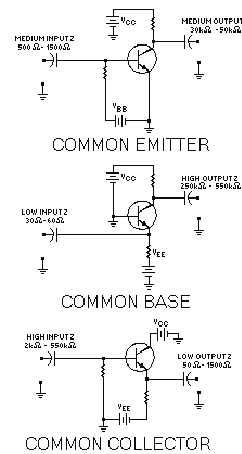1-16
is very low under these conditions. So you must decide what conditions you want in coupling two circuits
together and select the components appropriately.
Two important points to remember about impedance matching are as follows. (1) Maximum power
transfer requires matched impedance. (2) To get maximum voltage at the input of a circuit requires an
intentional impedance mismatch with the circuit that is providing the input signal.
Impedance Characteristics of Amplifier Configurations
Now that you have seen the importance of impedance matching the stages in an electronic device,
you may wonder what impedance characteristics an amplifier has. The input and output impedances of a
transistor amplifier depend upon the configuration of the transistor. In Module 7, Introduction to
Solid-State Devices and Power Supplies, you were introduced to the three transistor configurations; the
common emitter, the common base, and the common collector. Examples of these configurations and
their impedance characteristics are shown in figure 1-14.
Figure 1-14.—Transistor amplifier configurations and their impedance characteristics.
NOTE: Only approximate impedance values are shown. This is because the exact impedance values
will vary from circuit to circuit. The impedance of any particular circuit depends upon the device
(transistor) and the other circuit components. The value of impedance can be computed by dividing the
signal voltage by the signal current. Therefore:

